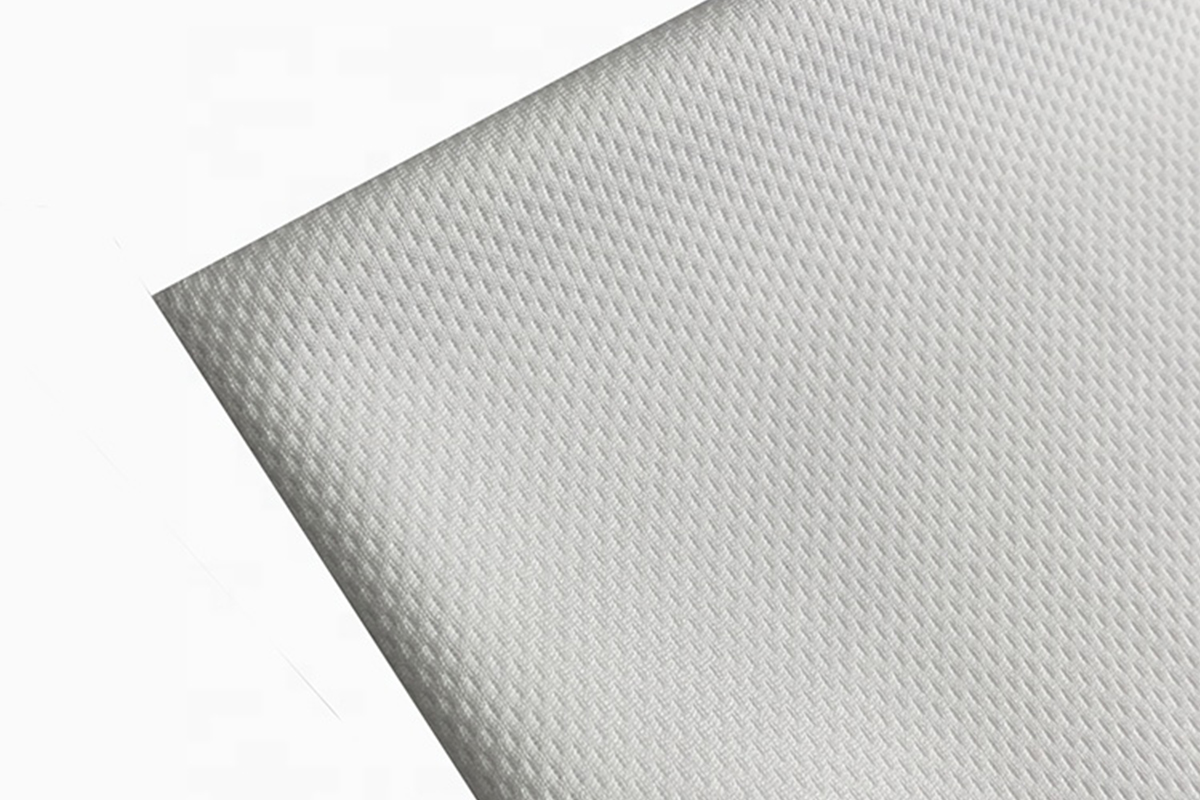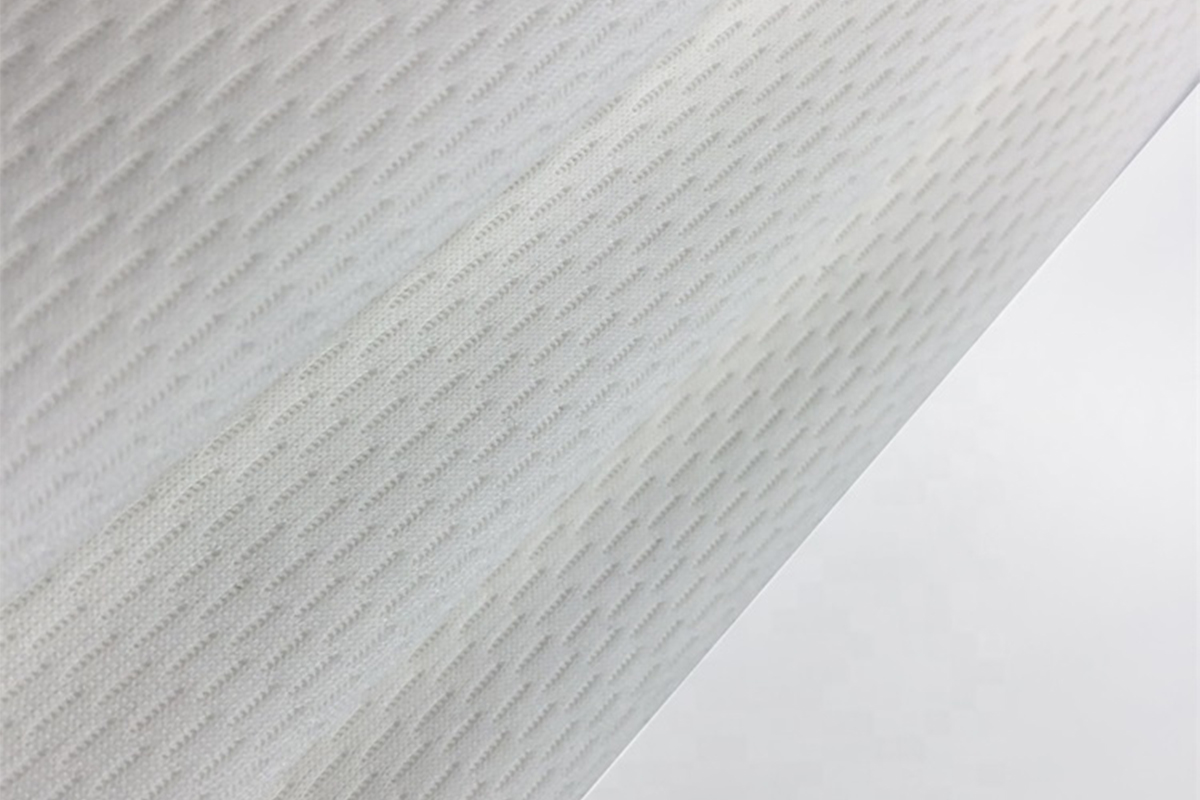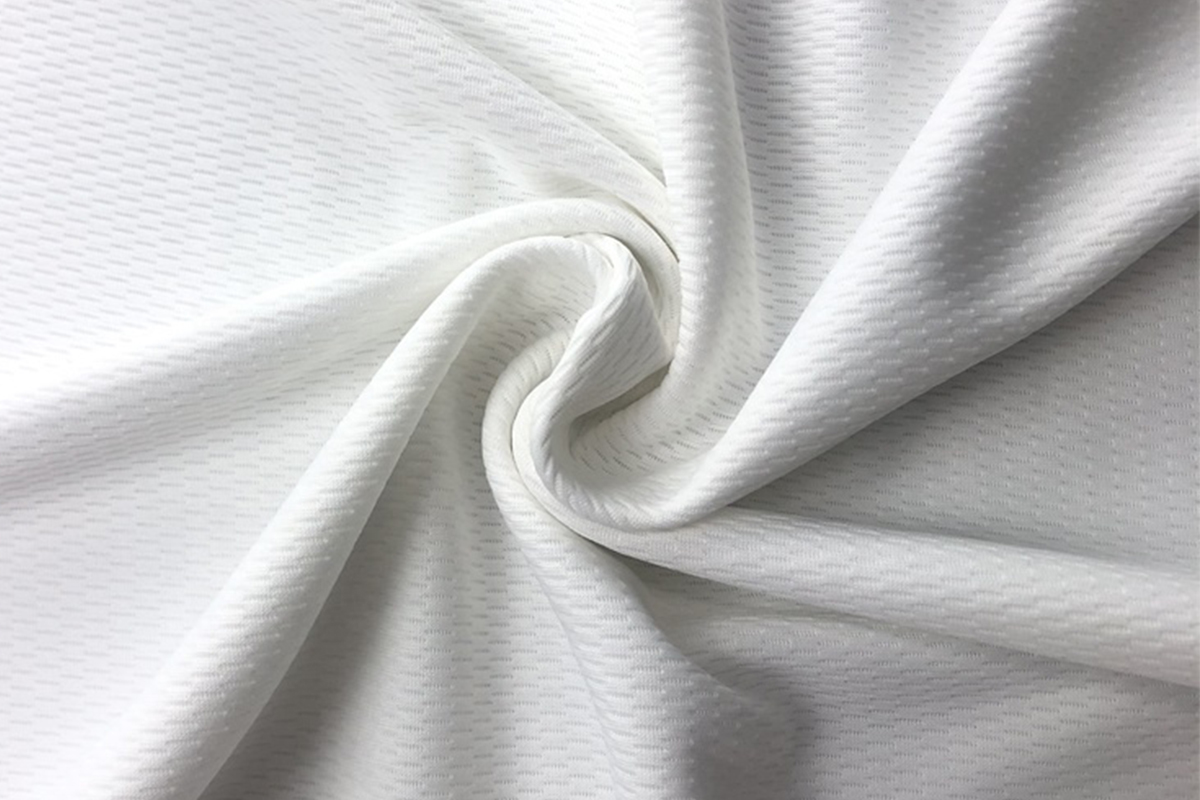Birdseye Fabric or Cotton? Find the Best
 When choosing fabrics, I always consider how they perform in specific applications. Birdseye fabric stands out for its unique weave and exceptional absorbency. It works perfectly for tasks requiring durability, like cleaning or baby care. Its lightweight structure and ability to maintain recycle quality make it a sustainable option. On the other hand, specialized cotton fabrics often suit clothing or decorative purposes better. For instance, Coolmax birdeyes fabric combines breathability with moisture-wicking properties, making it ideal for activewear. Each fabric has its strengths, and understanding these helps me make informed decisions.
When choosing fabrics, I always consider how they perform in specific applications. Birdseye fabric stands out for its unique weave and exceptional absorbency. It works perfectly for tasks requiring durability, like cleaning or baby care. Its lightweight structure and ability to maintain recycle quality make it a sustainable option. On the other hand, specialized cotton fabrics often suit clothing or decorative purposes better. For instance, Coolmax birdeyes fabric combines breathability with moisture-wicking properties, making it ideal for activewear. Each fabric has its strengths, and understanding these helps me make informed decisions.Key Takeaways
- Birdseye fabric features a unique dobby weave that enhances its absorbency and durability, making it ideal for cleaning and baby care applications.
- Its eco-friendly qualities stem from its natural fiber composition and long-lasting nature, reducing waste and supporting sustainable practices.
- Birdseye fabric excels in high-performance tasks, such as kitchen towels and cloth diapers, due to its ability to manage moisture effectively.
- When comfort and aesthetics are priorities, consider other cotton fabrics like plain weave for clothing or muslin for delicate applications.
- Understanding the strengths of each fabric helps in making informed decisions, ensuring you choose the right material for your specific needs.
- Birdseye fabric is suitable for both household and professional uses, including medical and industrial applications, due to its strength and reliability.
- Caring for Birdseye fabric is simple; wash it in cold water and avoid harsh chemicals to maintain its quality and longevity.
What is Birdseye Fabric?
 Definition and Characteristics
Definition and Characteristics
Birdseye fabric stands out due to its distinctive dobby weave. This weave creates a small, repetitive diamond-shaped pattern that resembles the eye of a bird. I find this unique texture not only visually appealing but also highly functional. The fabric often uses cotton as its primary material, though variations with linen or bamboo exist. Its lightweight nature ensures breathability, while the textured weave enhances absorbency. Unlike smoother cotton fabrics, Birdseye fabric feels slightly textured to the touch, which adds to its practicality in specific applications.
Durability defines another key characteristic of Birdseye fabric. The tightly woven structure resists wear and tear, even after frequent washing. I’ve noticed that this makes it a reliable choice for items that endure heavy use. Additionally, its eco-friendly qualities appeal to those seeking sustainable options. The fabric’s ability to maintain quality through multiple uses and washes aligns with environmentally conscious practices.
Common Uses
Birdseye fabric excels in various practical applications. I often see it used in baby care products, particularly cloth diapers. Its high absorbency and softness make it gentle on delicate skin while effectively managing moisture. Kitchen towels and cleaning cloths also benefit from its absorbent and durable properties. These items handle spills and messes efficiently without losing their integrity over time.
In addition to household uses, Birdseye fabric finds its place in medical and industrial settings. I’ve observed it being used for bandages and cleaning rags due to its strength and ability to withstand rigorous cleaning processes. Some manufacturers even incorporate it into eco-friendly fashion, creating lightweight and breathable garments. Its versatility ensures that it remains a staple in both domestic and professional environments.
Key Features of Birdseye Fabric
Texture
The texture of Birdseye fabric immediately stands out to me. Its unique dobby weave creates a diamond-shaped pattern that feels slightly raised to the touch. This texture not only enhances its visual appeal but also improves its functionality. I’ve noticed that the textured surface allows the fabric to grip moisture more effectively than smoother cotton fabrics. This makes it a practical choice for items like cleaning cloths and baby diapers. The tactile quality of Birdseye fabric also adds a layer of comfort, especially when used in products that come into direct contact with the skin.
Absorbency
Absorbency is where Birdseye fabric truly excels. Its weave structure increases the surface area, enabling it to soak up liquids quickly and efficiently. I’ve found this feature particularly useful in household applications. For example, kitchen towels made from Birdseye fabric handle spills with ease, leaving surfaces dry in no time. In baby care, its ability to manage moisture ensures that cloth diapers remain effective and gentle on sensitive skin. This high absorbency sets Birdseye fabric apart from other cotton fabrics, making it a reliable option for tasks requiring superior moisture management.
Durability
Durability defines another standout feature of Birdseye fabric. Its tightly woven structure resists wear and tear, even after repeated use and washing. I’ve observed that items made from this fabric maintain their integrity over time, which reduces the need for frequent replacements. This durability makes it an excellent choice for products subjected to heavy use, such as cleaning rags or reusable diapers. Additionally, the fabric’s strength ensures that it can withstand rigorous cleaning processes without losing its quality. For me, this reliability adds significant value, especially in applications where longevity is essential.
Eco-Friendliness
I always prioritize eco-friendliness when selecting fabrics, and Birdseye fabric consistently impresses me in this regard. Its sustainable qualities stem from its material composition and durability. Most Birdseye fabrics use natural fibers like cotton, linen, or bamboo, which are biodegradable and renewable. This makes them an environmentally responsible choice compared to synthetic alternatives.
The long-lasting nature of Birdseye fabric further enhances its eco-friendly appeal. I’ve noticed that products made from this fabric endure repeated use and washing without losing their quality. This reduces waste by minimizing the need for frequent replacements. For instance, reusable cloth diapers or cleaning towels crafted from Birdseye fabric significantly cut down on single-use items, which often end up in landfills.
Another aspect I appreciate is the fabric’s compatibility with eco-conscious practices. Manufacturers often produce Birdseye fabric using minimal chemical treatments, preserving its natural properties. Additionally, its lightweight structure requires less water and energy during washing and drying. This efficiency aligns with my efforts to reduce environmental impact in daily life.
In my experience, Birdseye fabric also supports sustainable fashion. Designers increasingly incorporate it into garments that balance functionality with environmental responsibility. Its breathability and durability make it a practical choice for creating long-lasting, eco-friendly clothing. By choosing Birdseye fabric, I feel confident that I’m contributing to a more sustainable future while enjoying a high-performing textile.
Comparison with Other Cotton Fabrics
 Plain Weave Cotton
Plain Weave Cotton
Plain weave cotton stands out for its simplicity and versatility. I often use it for everyday items like shirts, bed linens, and curtains. Its structure features a basic over-and-under weave, which creates a smooth and even surface. This simplicity makes it less absorbent than birdseye fabric, but it compensates with a softer feel and a more polished appearance. I find plain weave cotton ideal for applications where comfort and aesthetics matter more than functionality.
Durability is another advantage of plain weave cotton. The tightly woven threads resist wear and tear, making it suitable for long-term use. However, I’ve noticed that it lacks the textured grip of birdseye fabric, which limits its effectiveness in tasks requiring high absorbency. For example, plain weave cotton towels don’t handle spills as efficiently as those made from birdseye fabric. Despite this, its lightweight nature and smooth finish make it a popular choice for clothing and decorative textiles.
Twill Cotton
Twill cotton impresses me with its diagonal weave pattern, which gives it a distinct texture and added strength. I often see this fabric used in denim, workwear, and upholstery. The diagonal lines create a durable and sturdy material that withstands heavy use. Compared to birdseye fabric, twill cotton offers greater resistance to wrinkles and creases, which I find useful for maintaining a neat appearance in garments.
The thickness of twill cotton provides excellent insulation, making it suitable for colder climates. However, I’ve observed that its heavier weight reduces breathability, unlike the lightweight and airy nature of birdseye fabric. Twill cotton also absorbs moisture slower, which limits its use in applications requiring quick drying. Despite these differences, its durability and stylish texture make it a reliable option for rugged and fashionable items.
Muslin Cotton
Muslin cotton offers a lightweight and loosely woven structure that I find perfect for delicate applications. It feels soft and breathable, making it a favorite for baby blankets, swaddles, and summer clothing. Unlike birdseye fabric, muslin cotton prioritizes comfort over durability. I’ve noticed that its loose weave makes it less resistant to wear and tear, especially after repeated washing.
Absorbency is another area where muslin cotton falls short compared to birdseye fabric. While it can handle light moisture, it doesn’t perform well in tasks requiring high absorbency. However, its softness and gentle texture make it ideal for sensitive skin. I often recommend muslin cotton for projects where comfort and lightness take precedence over strength and functionality.
Best Uses for Birdseye Fabric vs. Other Cotton Fabrics
When to Choose Birdseye Fabric
I rely on birdseye fabric when functionality takes priority. Its absorbent and durable nature makes it perfect for tasks that demand high performance. For example, I often use it for cleaning cloths and kitchen towels. These items handle spills and messes efficiently without wearing out quickly. In baby care, birdseye fabric proves invaluable. Cloth diapers made from this material manage moisture effectively while remaining gentle on sensitive skin.
In professional settings, birdseye fabric also excels. I’ve seen it used in medical bandages and industrial cleaning rags. Its strength and ability to endure rigorous washing processes make it a dependable choice. Additionally, its eco-friendly qualities appeal to those seeking sustainable options. Reusable products like cloth diapers or cleaning towels crafted from birdseye fabric reduce waste and align with environmentally conscious practices. Whenever I need a fabric that combines practicality with sustainability, birdseye fabric becomes my go-to option.
When to Choose Other Cotton Fabrics
I turn to other cotton fabrics when comfort, style, or specific functionality matters more. Plain weave cotton works well for clothing, bed linens, and curtains. Its smooth texture and polished appearance make it ideal for applications where aesthetics and softness are essential. I prefer plain weave cotton for everyday wear or home textiles that prioritize comfort over absorbency.
For heavy-duty applications, twill cotton stands out. Its diagonal weave pattern adds strength and durability, making it suitable for denim, workwear, and upholstery. I appreciate its resistance to wrinkles and creases, which helps maintain a neat appearance. However, I avoid using it for tasks requiring high absorbency since its thicker structure absorbs moisture more slowly.
Muslin cotton offers a lightweight and breathable option for delicate uses. I often recommend it for baby blankets, swaddles, or summer clothing. Its soft texture feels gentle on the skin, making it a favorite for sensitive applications. While it lacks the durability and absorbency of birdseye fabric, muslin cotton excels in projects where lightness and comfort take precedence.
By understanding the strengths of each fabric, I can make informed decisions. Birdseye fabric suits practical and sustainable needs, while other cotton fabrics cater to comfort, style, or specialized purposes.
Birdseye fabric consistently proves its value in practical applications. I rely on it for tasks requiring absorbency and durability, such as cleaning or baby care. Its unique weave and eco-friendly qualities make it a dependable choice for sustainable living. For clothing, home décor, or specialized uses, I turn to other cotton fabrics like plain weave, twill, or muslin. Each fabric serves a distinct purpose. By understanding their strengths, I can confidently select the best option for my needs, whether it’s functionality or style.
FAQ
What makes Birdseye fabric different from other cotton fabrics?
Birdseye fabric stands out due to its unique dobby weave, which creates a diamond-shaped pattern resembling the eye of a bird. This weave enhances its absorbency and durability, making it more functional than smoother cotton fabrics. I’ve noticed that its texture and lightweight nature also contribute to its versatility in various applications.
Is Birdseye fabric suitable for baby products?
Yes, Birdseye fabric works exceptionally well for baby products. Its softness and high absorbency make it ideal for cloth diapers and baby wipes. I’ve found it gentle on delicate skin while effectively managing moisture, which is crucial for baby care.
Can Birdseye fabric be used for clothing?
While Birdseye fabric is not as common in clothing as plain weave or twill cotton, it can still be used for lightweight and breathable garments. Designers sometimes incorporate it into eco-friendly fashion. I’ve seen it used in casual wear where functionality and sustainability are priorities.
How does Birdseye fabric compare to muslin cotton?
Birdseye fabric offers greater durability and absorbency compared to muslin cotton. I’ve observed that muslin feels softer and lighter, making it better for delicate uses like baby blankets or summer clothing. However, Birdseye fabric performs better in tasks requiring strength and moisture management.
Is Birdseye fabric eco-friendly?
Yes, Birdseye fabric aligns with eco-friendly practices. Most versions use natural fibers like cotton, linen, or bamboo, which are biodegradable. I appreciate its durability, as it reduces waste by lasting through multiple uses and washes. Reusable products made from Birdseye fabric, such as cloth diapers, further support sustainability.
What are the best household uses for Birdseye fabric?
Birdseye fabric excels in household applications like kitchen towels, cleaning cloths, and reusable napkins. I’ve found it highly effective for handling spills and messes due to its absorbent and durable nature. Its ability to withstand frequent washing makes it a reliable choice for everyday use.
Can Birdseye fabric handle industrial or medical applications?
Yes, Birdseye fabric performs well in industrial and medical settings. Its strength and durability make it suitable for cleaning rags, bandages, and other heavy-duty uses. I’ve seen it endure rigorous cleaning processes without losing quality, which adds to its practicality in professional environments.
How do I care for Birdseye fabric?
Caring for Birdseye fabric is straightforward. I recommend washing it in cold or warm water with mild detergent to preserve its texture and absorbency. Avoid using harsh chemicals or bleach, as they can weaken the fibers. Line drying or using a low-heat dryer setting works best to maintain its longevity.
Does Birdseye fabric shrink after washing?
Like most cotton fabrics, Birdseye fabric may shrink slightly after the first wash. I usually pre-wash it before use to account for any shrinkage. Proper care, such as washing in cool water and avoiding high heat, minimizes this issue.
Where can I buy Birdseye fabric?
Birdseye fabric is available at most fabric stores and online retailers. I often find it in sections dedicated to eco-friendly or utility fabrics. Some manufacturers also offer it in bulk for those creating reusable products like cloth diapers or cleaning towels.
Post time: Jan-14-2025
